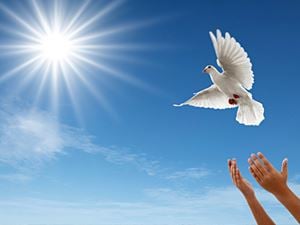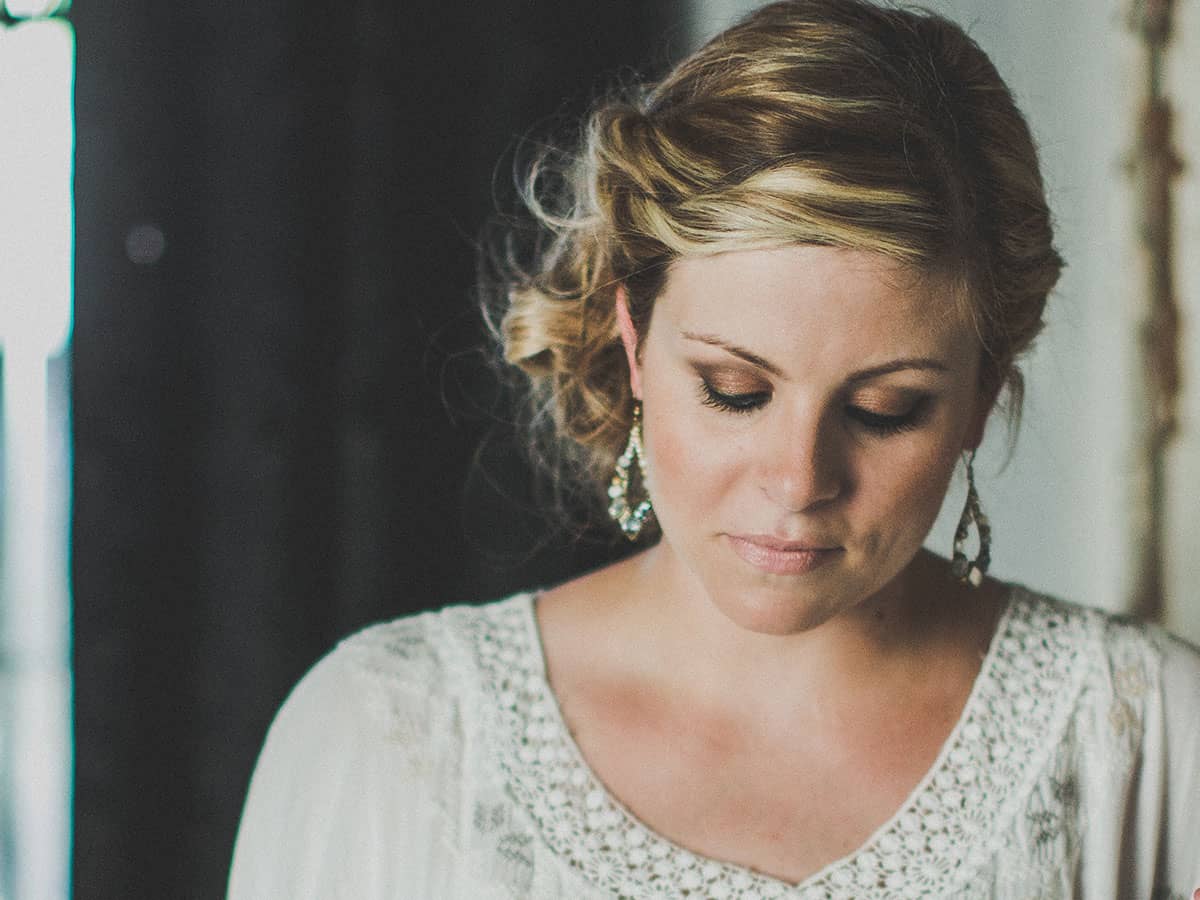
Brace for impact, the pilot, Capt. Chesley "Sully" Sullenberger, said last January 15. The passengers of Flight 1549 knew what that meant: prepare for their final moment here on earth.
Mark Hood, in seat 2A, described it as the most peaceful silence he had ever experienced. He began his last prayer: “God, let my wife Lisa find happiness without me. Let my daughter Maggie follow her dream of attending NYU without being haunted by this New York memory.”
Beth McHugh looked down at the Hudson River and flashed to her familiar nightmare: being in a car that careened off a bridge into a river and drowning. A nightmare so real and so raw that she would only buy new cars with hand-crank windows, so she’d have a chance to get out. “Daddy, I’ll be seeing you in heaven soon,” she prayed. “And please don’t let me stay in the water too long.”
Barry Leonard remembered his plea to God the day before. As he awaited the results of his wife’s tests for possible breast cancer, he said,“ God, if you’re going to take someone, take me.” Her tests came back negative. “I guess I’m going to get what I asked for,” he said to himself.
Vicki Barnhardt, wife and mother of two young children, reached for her cell phone and got through to her husband’s voice mail. “I love you, I love the kids,” she blurted out. “I love you, I love you.”
They didn’t think they were going to die, they knew it.
They were plunging down below the New York City skyscrapers, hurtling toward the Hudson. Big commercial jets weren’t made to land on water – when it happens, they crack in half. And on this cold winter’s day, that water would be frigid. It all looked bleak, and they had no control. So they surrendered. They let go – and let God, or some force greater than themselves.
And as we all know that plane didn’t crash. It skidded to a safe landing, guided by a savvy pilot sent by central casting, or somewhere. Ferry boats closed in as if on cue, many in close proximity because this just happened to time for shift change. The snow and the winds from that morning had faded, making rescue conditions ideal.
It was the Miracle on the Hudson. Do you remember the pictures of those passengers standing on those water-covered wings? Did it fill you, as it did me, with awe and wonder? Was this some kind of sign? At our country’s time of economic turmoil, struggle, pain, and uncertainty, could this have been a signal that someone or something was looking out for us? That there was reason to hope? That something good really can come from something that looks bad – very, very bad?
There was more going on inside this miracle than those angelic images. In researching my book Brace for Impact, I came to appreciate just how much the 150 passengers had to do with assuring their own survival. After Sully’s perfect landing, I learned of countless, amazing acts of courage, grace, selflessness, awareness, compassion.
Something was guiding them, some force that brings out the best in the human condition. Meister Eckhart, the 14th century German mystic, had a phrase for the state they seemed to enter: “Let yourself go, and let God be God in you.” The stories the passengers of flight 1549 were among some of the most heroic tales I’d every heard.
- Mark Hood, former Marine lieutenant, assumed a command post at the rear of one of the life rafts and spotted two passengers trying to swim to shore. “Swim over here!” he yelled. Minutes later he hoisted them onto the raft, noting how the woman’s lips were blue with hypothermia. Another minute in that 36-degree water and she’d have been gone.
- Eighty-five year old Lucille Palmer turned to her 40-something daughter Diane and said, “You go. I’ll stay. I’ve lived my life.” To which her daughter replied, “No, Ma!” as a flight attendant swooped in and escorted her mother out.
- In the vulnerable rear of the aircraft, where the water was above waist level, Brad Wentzell followed the surge through the aisles and was this close to the exit, this close to the light outside the darkened plane, this close to life, when he heard the cries. The mother and her baby were trying to climb over the seats. They were stuck, and terrified “I can’t leave them behind,” Brad said. He turned back against the tide of humanity, scooped them up in a two-fisted bear hug, woman on one side, baby on the other side. And this former wrestler who can bench press close to 400 pounds boomed “Coming through!” and he brought them through – to life.
- Dave Sanderson kept watch until everyone had safely gotten out the back, and with the wings and rafts now full, he was left to straddle the sinking plane and a ramp. He was in the water so long his body temperature was so low and his blood pressure so high he had crossed into the danger zone. Because he had to help.
- Meanwhile, at the front of the plane, Barry Leonard, who had to look at his seat after the landing to make sure his dead body was not there, heard someone give the command to “Jump!” and plunged into the cold river with no life preserver or seat cushion. He fractured his sternum on impact and thought: “I’ll swim to the Jersey shore.” Then: “No, it’s too far, I should go back near the plane.” And then...he doesn’t remember. Hands, he feels hands pulling him onto a raft.
What began at first to look like a devastating twist of fate turned into an extraordinary date with destiny for the people on that plane. And they all went home alive--recipients of a gift and a second chance. They came away with the grace to go on and build on a miracle. And during the past 12 months they have opened their hearts and minds to what that means, individually and collectively.
- Bill Elkin asks, “why am I here” and begins to give talks at churches. The theme?: Imagine you had one minute to live.
- Dave Sanderson begins speaking to groups large and small across the country about hope, about how we all can be heroes, about how miracles are possible. He shares proceeds with the Red Cross, extending the circle of giving and receiving.
- Gerry McNamara, who used to swim in the Hudson as a boy, writes up his story of the crash and watches it go viral across the Internet. A private guy grapples with suddenly becoming very public. “I’m meant to do this,” he decides. “This is a way I can serve.”
- Beth McHugh, her heart full of gratitude, vows to hug everyone she meets. “Each person is a gift I didn’t expect to have,” she says, “and maybe when they hug me they can feel they are hugging life.” At Newark Airport a few days after the crash she is pulled off the line for extra screening. She explains to the woman security agent patting her down about her vow to hug. “But I understand your need for boundaries,” Beth says, to which the agent replies, “Honey, bring it on!”
- Hilda, the doctor who identified Barry Leonard’s (who is barry?) weakened state at the scene and watched over his care for three days in the hospital, is moved to tears when Barry honors her and all Jersey first responders at a thank-you luncheon. Later, she calls upon the miracle to motivate a patient losing the will to live. “Those passengers thought they were going to die,” she says, “but when that plane landed they made a different choice. Isn’t life sacred?” Her patient turns the corner.
- Brad Wentzell remembers back to his childhood. A time of too many fights, too much trouble. “Bad kid!” they all called him. Now he holds up the moving letter from Tess, the mom with the baby, thanking him for helping to save their lives, and he thinks: “If this is the one good thing I do in life, it is enough.”
Ripples. After the miracle, these ordinary people who lived an extraordinary experience have experienced rising love, faith, wisdom, healing. Some are so full of love and compassion they hardly know what to do with it. They’re building on the miracle, extending it out in caring and goodwill to their families, to their co-workers, to their friends, to their communities, to the world. They are cheered at work, heralded in church, embraced at home. People delight in being around them, being near the miracle.
And now, on the one-year anniversary of the Miracle on the Hudson, we are invited to consider this question: can the ripples reach us too? Can we too be touched by this miracle, or whatever we choose to call it? After all, we weren’t on that plane. We didn’t know these people beyond the news reports, the documentaries and the books. We didn’t reach the brink of death and come away with this gift of “new” life.
And yet, might there be that deeper meaning we sensed from when we heard about the miracle that day, or a year after, that we can take inside our own hearts and souls? Could there be lessons we can gain from the examples of these people riding the waves of their spiritual awakening or renewal?
In a way, we’re all survivors. We’ve all had our “plane crash,” or crashes, though they may not make Headline News. We’ve faced, or perhaps are facing, dark moments, conditions that look bleak, outlooks without light. We’ve been up to our necks in the cold, dark waters of this unpredictable life that brings not only moments of unbridled joy but of startlingly real challenges. We’ve all had moments when we, like those passengers who were asked to brace for impact, had to surrender. To let go.
And we’re still here. We too have been touched by grace, no doubt many times, even every day. We have had compassionate hands reaching for us in the dangerous current or wrapping us in a bear hug of caring and support. We have been granted second chances. We have received unexpected gifts.
Isn’t it possible that the ripples of this miracle now, one year after, can serve as reminders that what we need, what we long for in new chances, new possibilities, is right in front of us? Right here, right now? Perhaps what happened that cold winter’s day on the Hudson, and what the passengers have made of the experience, can sprinkle the seeds that, if we nurture them, can help us grow. To become more of who we’re meant to be. To shine. To let God be God in us.

